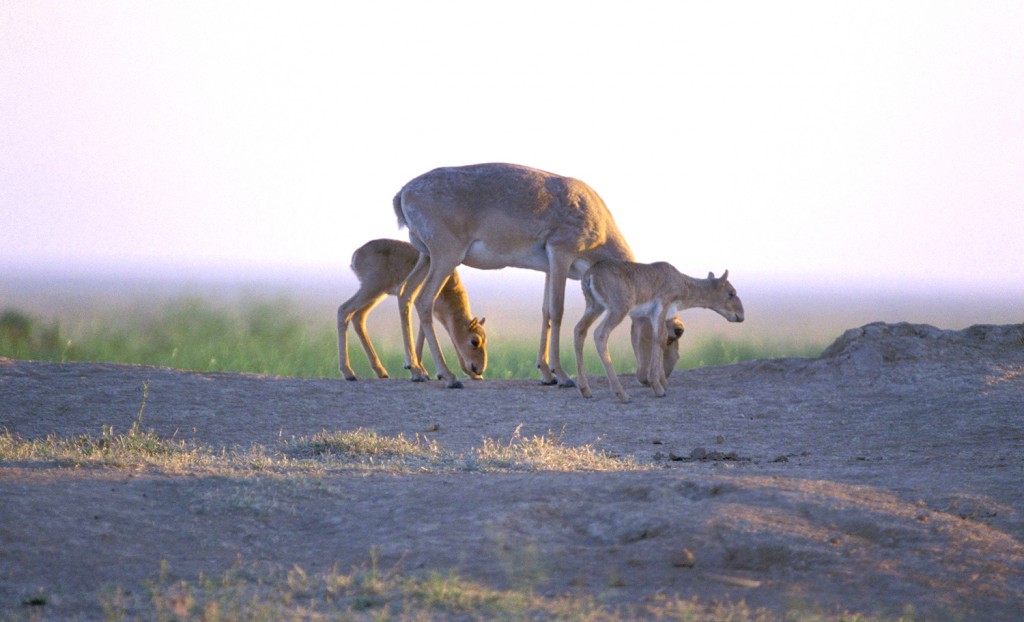On the International Union for Conservation of Nature (IUCN) Red List, which has been guiding conservation efforts for more than five decades, the saiga antelope has moved in just six years from vulnerable to critically endangered.
The population pendulum, however, is starting to swing the other way.
 Through the efforts of organisations such as IUCN, the Worldwide Fund for Nature (WWF), WildInvest and Saiga Conservation Alliance (SCA), the figures have increased from a low of 30,000 in 2003 to more than 150,000, according to an article published on the National Geographic Society website. Many of the animals roam the Ustyurt Plateau in the steppe region of Kazakhstan and Uzbekistan.
Through the efforts of organisations such as IUCN, the Worldwide Fund for Nature (WWF), WildInvest and Saiga Conservation Alliance (SCA), the figures have increased from a low of 30,000 in 2003 to more than 150,000, according to an article published on the National Geographic Society website. Many of the animals roam the Ustyurt Plateau in the steppe region of Kazakhstan and Uzbekistan.
“While the recent increase in saiga numbers is encouraging, it has also resulted in increased poaching pressure,” said Maria Karlstetter, saiga programme manager at Fauna & Flora International, in an article. “With saigas becoming more abundant again, hunting has become easier and thus lucrative.”
A small antelope with a distinctive bulbous nose, the saiga once roamed in herds approaching 2,000,000 strong across the plains of Central Asia and Russia. The animal is highly adapted to the harsh climate conditions of the semi-deserts, making it a mainstay species of the steppe ecosystem it inhabits. Although protected under national and worldwide laws and conventions, the main threat is illegal hunting for horn and meat, the former used in traditional Chinese medicine. As only males bear horns, poaching has resulted in heavily-skewed sex ratios causing a significantly-reduced reproduction rate.
Through the support of international organisations, the Kazakh saiga antelope project has developed a multifaceted approach to monitoring the animal’s population and movement. Field observations during migration in the winter and data collected throughout the year are helping to inform future conservation planning, according to the WildInvest website, www.wildinvest.com.
The saiga is representative of the nomadic traditions of the Ustyurt Plateau and engaging local communities has been a critical component. Community awareness and regional workshops held in villages known to be local poaching hubs serve to initiate discussion, giving villagers ownership of the venture and promoting long-term success.
Project leaders like Elena Bykova demonstrate how effective the endeavour can be. A graduate of the biology department of Tyumen State University, she heads a network of saiga friend groups, a community of 10 clusters with approximately 50 members including police and teachers. The volunteers work as monitors and animal advocates, collecting crucial information and targeting hunters and poachers to join them.
“The saiga plays a distinctive role in maintaining the steppe habitat conditions for a range of other threatened species and is an important part of the cultural heritage of nomadic people who historically shared the same lands for thousands of years,”said Bykova in a statement on www.wildinvest.com. “The saiga’s fate could not keep me indifferent. I really believe that we can save the saiga and would be happy if new people join us for this noble aim.”


